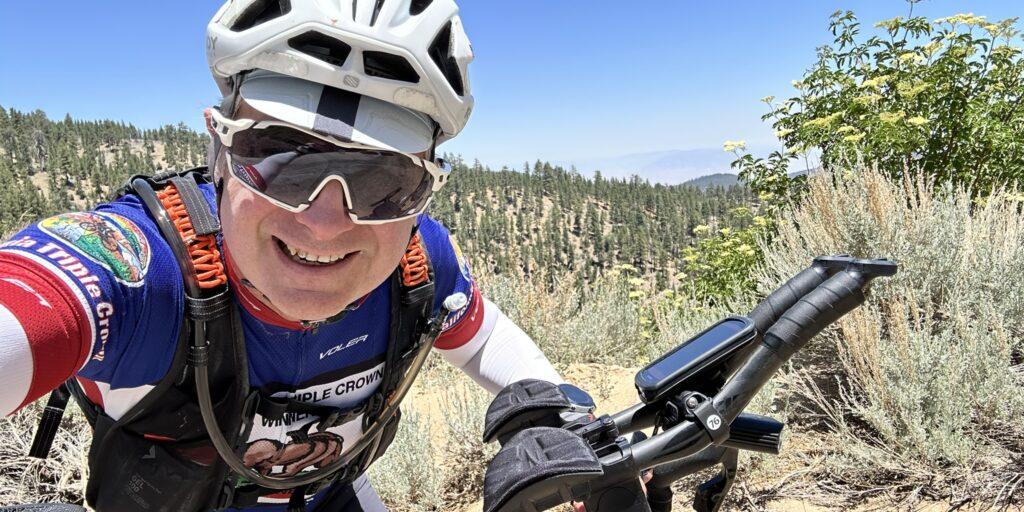The second half of 2025 didn’t go the way I planned. On paper, it looked like the perfect setup: three major events to close out the season—Hoodoo 300, The 508, and the Transverse Ranges 8K 600K Brevet. In reality, it turned into a hard season of lessons. Three DNFs in a row.
There’s no way to sugarcoat that. It was rough. But in hindsight, it’s also clear what went wrong—and what I need to work on going forward.
Hoodoo 300: Lightning, Rain, and Déjà Vu
It started with Hoodoo 300. I made it about 192 miles before pulling the plug in Parowan. The weather was apocalyptic. I rode through a thunderstorm that dumped record rainfall across southern Utah. Despite my rain gear, I was soaked and shivering by the time I reached the Panguitch time station. I changed into dry clothes, warmed up, and convinced myself to keep going.
But the toughest part of the course still lay ahead: the long, high-altitude grind up to Cedar Breaks, topping out over 10,000 feet. By the time I reached the summit, darkness had fallen and the temperature had dropped sharply. It was a repeat of 2023 all over again—another frigid descent through Cedar Breaks, body trembling, fingers barely able to squeeze the brakes.
When I finally rolled into Parowan, I knew I was done. I was freezing, exhausted, and sore everywhere. I called my wife. She didn’t hesitate to come get me. It was the right call, but it stung just the same.
The 508: Running Out of Miles
Next came The 508. I went in determined to redeem myself. The race starts in Borrego Springs, California—hot, dry, and deceptively brutal. The first loop was 205 miles with over 16,000 feet of climbing. I managed to finish that first loop but arrived back at the start completely spent.
I told myself I’d take a short nap before heading out on Loop 2. That “short nap” turned into several hours. When I woke up, I just didn’t have any more miles in me. The tank was empty.
It wasn’t just physical fatigue—it was deep exhaustion, the kind that seeps into your motivation and steals your will to continue. In that moment, I didn’t have the tools or conditioning to push through it. That realization was hard, but it was also clarifying.
Transverse Ranges 8K600K: The Repeat
Just a few weeks later, I lined up for the Transverse Ranges 8K 600K Brevet. In truth, I knew I wasn’t ready. My recovery hadn’t been sufficient, and I hadn’t made any real changes since The 508.
Predictably, the result was almost the same story: a strong start, followed by mounting fatigue, then the slow fade into another DNF. It wasn’t a surprise—it was confirmation.
Lessons From the Chaos
Three DNFs in one season will shake your confidence. But it also forces you to look closer at why.
For me, the pattern was obvious: I could handle the first long effort, but once sleep deprivation and accumulated fatigue set in, I crumbled. I hadn’t trained specifically for that—multi-day fatigue, back-to-back rides, managing sleep, and sustaining mental focus through exhaustion.
There was another piece too. Beginning around June, I started to lose the consistency that had carried me through the first half of the year. Work pressures, long hours, and the usual demands of life got in the way. At the time, I chalked it up to stress—something temporary, something I could just push through later. But consistency is everything in endurance training. By the time the big races arrived, the foundation just wasn’t there.
Looking Ahead
So yes—2025 was a real shit show. But it was also a wake-up call.
Going into next season, I’m rethinking how I prepare. I’ll be training for multi-day endurance, experimenting with short sleep cycles, and building more back-to-back long rides into my schedule. My goal isn’t just to finish these events—it’s to be ready for the moments when my body and mind want to give up.
If ultracycling teaches anything, it’s that the road to progress is rarely smooth. Sometimes you have to DNF a few times to figure out what finishing really means.
A Note to Other Aspiring Ultracyclists
If you’re trying to balance this sport with a demanding career, here’s a piece of advice: being a litigation attorney is probably not the best profession for excelling at this hobby.
But if you love it enough, you find a way to make it fit. You ride early, you ride late, you ride tired. And sometimes, you fail spectacularly. That’s okay. Every DNF writes part of the story. The key is making sure the next chapter is better.

